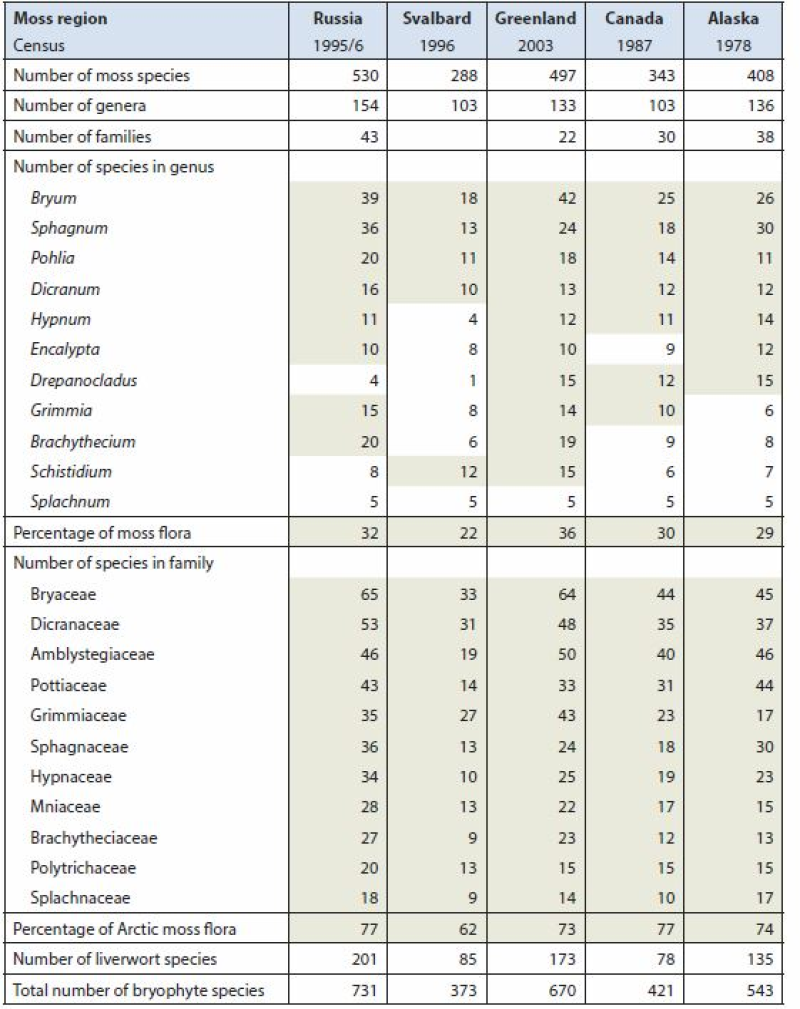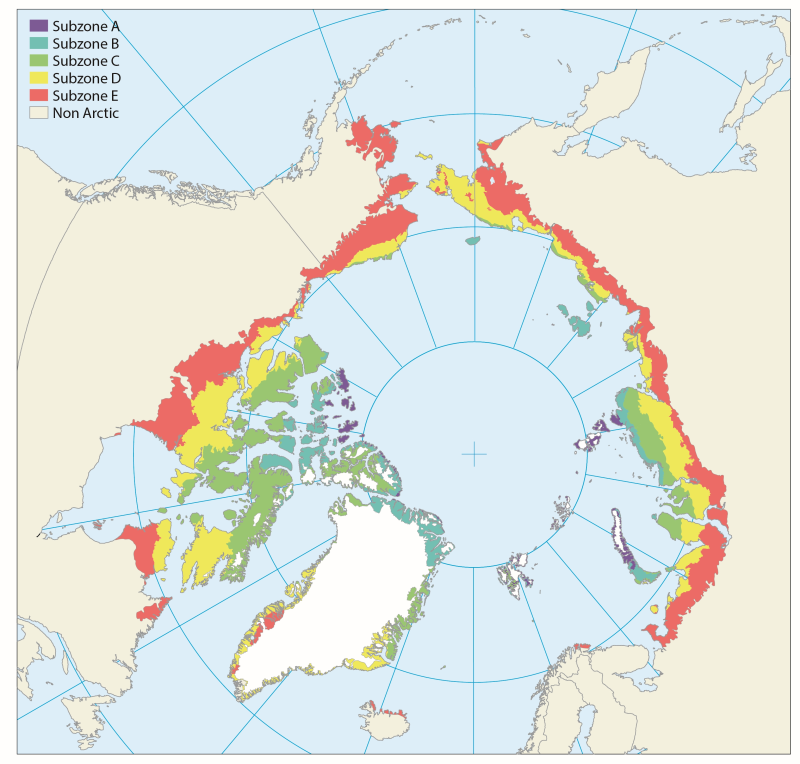bryophytes
Type of resources
Available actions
Keywords
Contact for the resource
Provided by
Update frequencies
-

Arctic Biodiversity Assessment (ABA) 2013. Table 9.5. Species numbers of species-rich moss genera and families. Numbers highlighted in grey fields are used in calculating the percentage of the total moss flora. Listed are Splachnum, genera with at least 10 species and families with at least nine species. Conservation of Arctic Flora and Fauna, CAFF 2013 - Akureyri . Arctic Biodiversity Assessment. Status and Trends in Arctic biodiversity. - Plants(Chapter 9) page 333
-

Based on published scientific literature, the diversity of plants in the Arctic is reviewed. The plants are divided into three main groups according to essential differences in anatomy, morphology and reproduction. These are vascular plants, bryophytes (mosses and liverworts) and algae (micro- and macroalgae). As a whole, these three plant groups have the ability to perform photosynthesis. As primary producers they play a key role in the environment, since photosynthesis provides resources for all other organisms. Vascular plants and bryophytes (together with the lichenized fungi, the lichens) are the main structural components of terrestrial vegetation and ecosystems, while algae are more abundant in fresh water and marine ecosystems. Conservation of Arctic Flora and Fauna, CAFF 2013 - Akureyri . Arctic Biodiversity Assessment. Status and Trends in Arctic biodiversity. - Plants (Chapter 9)
 CAFF - Arctic Biodiversity Data Service (ABDS)
CAFF - Arctic Biodiversity Data Service (ABDS)